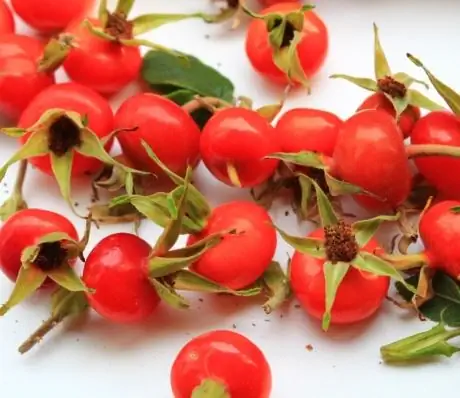- Author Rachel Wainwright [email protected].
- Public 2023-12-15 07:39.
- Last modified 2025-11-02 20:14.
Salad
Lettuce belongs to early maturing annual plants widely cultivated in many countries. There are more than a thousand varieties of this garden crop, which come from the crossing of different varieties of lettuce. They can be conventionally divided into four main types: cabbage, leaf, asparagus and romaine.
The ratio of BJU in the product

Source: depositphotos.com How to burn 15 kcal?
| Walking | 4 minutes |
| Jogging | 2 minutes. |
| Swimming | 1 min. |
| A bike | 2 minutes. |
| Aerobics | 3 min. |
| Household chores | 5 minutes. |
Useful properties of lettuce leaves
Despite the fact that the birthplace of lettuce is unknown, there are many historical sources indicating that this culture was known and widely used in ancient times by the Romans, Greeks and Egyptians, and in European countries, lettuce began to be cultivated from the sixteenth century.
Due to its beneficial properties, lettuce leaves are considered the best addition to meat, potato and fish dishes. They contain a large amount of folic acid, which helps to regulate metabolism, and also affects the work of the nervous and hematopoietic systems. They are also an excellent source of vitamin A and C. In addition, lettuce leaves have a mild diuretic, antitussive, sedative and expectorant properties.
Lettuce leaves contain a large amount of trace elements necessary for the body, including zinc and copper, manganese and cobalt, titanium and molybdenum, iodine and boron. The salad also includes:
- Calcium - up to 15%;
- Potassium - up to 38%;
- Phosphorus - up to 9%;
- Iron and magnesium - up to 5%;
- Silicon - up to 8%.
Salad and sulfur, which is part of its chemical composition, is valued, the lack of which in the body can lead to the development of various nervous diseases. Together with silicon, sulfur contributes to the normalization of hair growth, and also affects the condition of the tendons and skin.
Sulfuric acid, nitric acid and hydrochloric acid potassium salts contained in lettuce leaves are useful for the functioning of the pancreas, liver, kidneys and circulatory system.
The magnesium in lettuce leaves an effect on the brain, muscle tissue and nerve fibers. Organic magnesium salts contribute to the cellular construction of lung tissue and the maintenance of normal blood circulation.
Scientists have noted the benefits of lettuce leaves for children, as well as for the elderly. In addition, this herb is recommended for those who lead a sedentary lifestyle and with diabetes.
The calorie content of lettuce leaves is low and varies from 10 to 27 kcal, depending on the variety. Thanks to this, lettuce leaves are recommended for use in various diets.
Application of lettuce leaves
Lettuce leaves have a beneficial effect on fat metabolism and help lower blood cholesterol levels, which reduces the risk of developing diseases such as hypertension, atherosclerosis and obesity. Lettuce leaves improve digestion and also have a calming effect on the nervous system, as they have a slight hypnotic effect.
In addition, the benefits of lettuce leaves for nursing mothers have been noted - the leaves and an aqueous infusion from the crushed seeds of the plant help to increase milk production.
An infusion of fresh crushed lettuce leaves in folk medicine is prescribed for chronic gastritis, increased emotional excitability, insomnia, hypertension, scurvy, heart disease and liver disease.
Certain types of lettuce, such as watercress, are rich in iodine and can be used as a thyroid lotion. Regular consumption of watercress leaves, due to the high content of beta-carotene and lutein, reduces the likelihood of developing eye diseases such as cataracts and age-related macular degeneration.
The beneficial properties of lettuce leaves are used in cosmetology for the preparation of various masks that contribute to the rejuvenation of facial skin cells. Also, in case of sunburn, it is recommended to wipe the affected area with juice from fresh lettuce leaves.

Contraindications
Despite the low calorie content of lettuce leaves and the beneficial properties of this plant, there are a number of contraindications for its use in food. So, any types of salad are contraindicated in large quantities for:
- Peptic ulcer of the stomach and duodenum;
- Gout;
- Exacerbation of chronic duodenitis;
- Urolithiasis (with oxalate, urate and phosphate stones);
- Acute bowel diseases with severe digestive disorders.
YouTube video related to the article:
Found a mistake in the text? Select it and press Ctrl + Enter.






